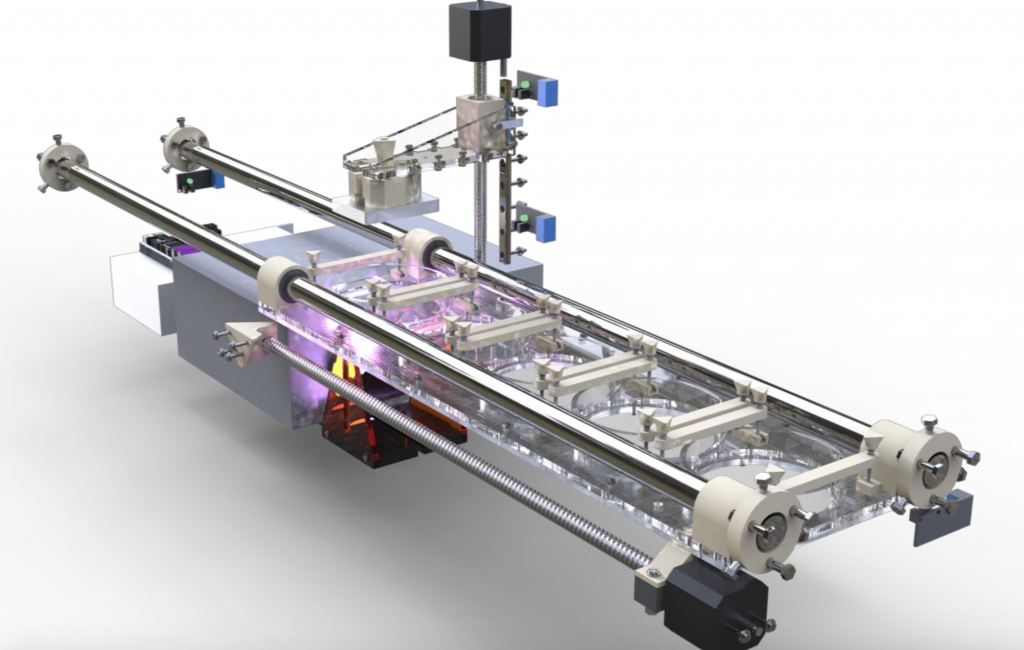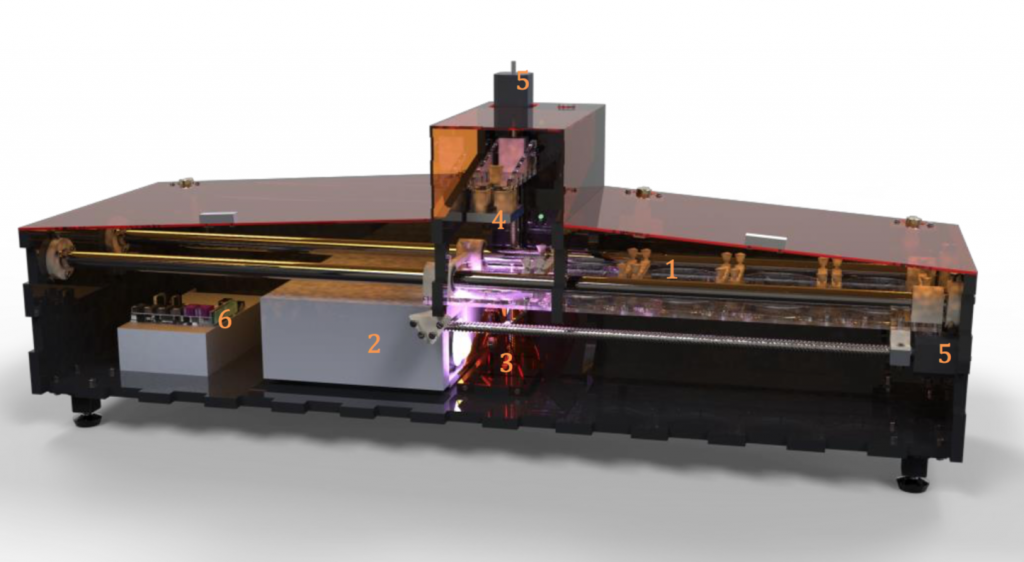There are basically two ways to go about making multi-material objects with photopolymer resin-based 3D printing processes. One is based on material science and uses inkjet 3D printing technologies, such as Stratasys’ Polyjet and 3D Systems’ MJM, to release and instantly cure different materials in the same print job. Another is mechanical, which is what 3D Systems’ presented around this time last year.
This latest approach is similar to the one implemented by Reinout Holtrop, a student from the University of Twente, for his Final Bachelor Assignment in Industrial Design, to design, develop and build the first DLP-based multi-material 3D printer, which he named XZEED. Ultimately, the basic concept behind the machine is relatively simple: using five alternating petri dishes in borosilicate glass with a PDMS layer, on a moving vat carrier.
This is the key component in the XZEED machine. It is made up of two shafts with bearings which support a movable array with the round vats. Light is projected with a beamer via a mirror on the bottom of the vat. The build platform is then moved vertically by the z-spindle, while the the x-spindle moves the array to change the vat.
Holtrop studied several 3D printers before developing his own design, including, of course, the industry leading Perfactory series by EnvisionTEC and CLIP technology by Carbon3D. He based his own project on a manual of how to design a normal DLP printer published by Tristram Budel in 2013, which is based on a Ramps 1.4 motherboard placed on top of an Arduino Mega 2560. This simplified building and setting up the firmware.
The beamer that he used for this project is a Benq PB7230 DLP beamer. It works at the XGA resolution (1024×768) and was modified to be able to have a shorter throw. Perhaps the most amazing aspect is that almost all of the other components, which give the machine a highly professional and solid appearance, were manufactured with readily available in-house rapid prototyping tools. Using CNC mills, laser cutters and 3D printers, enabled Holtrop to work with PMMA plastics for the hood, as well as metal and MDF parts.
Apparently the project is still in its infancy, as Holtrop has stated several further areas of research, including experimenting with resin thickness, the light source (using LED’s instead of a projector), and improving the stability of the vats by building them using a more flexible material. For sure, this is a project that will draw quite a bit of attention from the industry and it will be very interesting to find out how and when it will grow into a commercial product.





